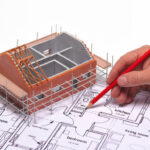The act of resurfacing your driveway does not have to be performed by professionals if you know what you are doing. It is fine to call upon them if you do not understand how to perform the job yourself, of course. However, it does not take long to learn.
The first thing you need to realise is that resurfacing the driveway does not always mean using the same boring materials that most other people use. They tend to stick with plain grey concrete on their driveways and that’s fine. There are definite perks to leaving the driveway material as is, apart from time saved replacing it. Plain grey concrete on the driveway has no colour and therefore you need to take colour protection measures pebble paving in Melbourne.
That can result in a lot of money saved and that can be put to better use. If you are performing the resurfacing yourself then in that case the money goes towards buying the equipment and materials needed for the job. Otherwise, the money goes to the resurfacing professionals. If you do want to replace the material then there are benefits to that approach. Stencilled, stamped or coloured concrete will require decorative sealer for protection; that much is true. However, the appearance is unique and will be unlike anything else in your neighbourhood. If you like to show off then that is a very good way to do so.
There are multiple steps towards a decent resin bound paving https://www.jeipebbles.com.au/resin.html. These include the following:
– Cleaning the driveway. Before resurfacing can even get started you have to ensure that the driveway is as clean as it can be. That will involve moving the cars and you may find it difficult but it will be worth it.
– After the cleaning job, you need to dry the driveway before resurfacing can be started. This is so that the sealing product can be applied properly.
– You must also clear the debris that may have resulted from the cleaning and drying. The last thing you want is to find little bits of filth dotted around the driveway while you apply the sealing product.
– Now the resurfacing can truly start. You need to thin the sealer at 15% for the first coat. Since this is the first application it needs to be thin enough for the next few applications. You don’t want to apply too much to start with or the resurfacing becomes awkward later.
– Cut in with the brush to prepare for the next step.
– When you are applying your roller you do not want a thick application of the sealer. It is possible for the sealer to bubble once it has been applied and that can get ugly very quickly. Ensure the sealer is thin enough to not produce the bubbles. You may need to practise this on an area that is out of the way.


